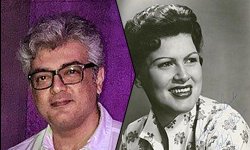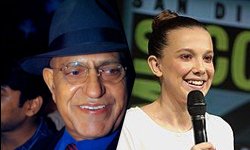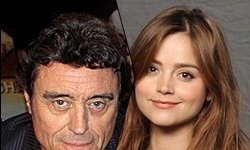BioGraph
Connecting Adolf Eichmann and Wernher von Braun
Adolf Eichmann
After a posting in Prague to assist in setting up an emigration office there, Eichmann was transferred to Berlin in October 1939 to command the ''Reichszentrale für jüdische Auswanderung'' ("Reich Central Office for Jewish Emigration") for the entire Reich under Heydrich and Heinrich Müller, head of the Gestapo. He was immediately assigned to organise the deportation of 70,000 to 80,000 Jews from Ostrava district in Moravia and Katowice district in the recently annexed portion of Poland.
Heinrich Müller (Gestapo)
British author and translator Edward Crankshaw described Müller as "the arch-type non-political functionary" who was "in love with personal power and dedicated to the service of authority, the State." General Walter Dornberger, the chief over the rocket research at Peenemünde, (under alleged Gestapo suspicion) was one of the few to ever interview with Müller and characterized him as, "the unobtrusive type of police official who leaves no personal impression on the memory" but added, "... all I could remember was a pair of piercing grey-blue eyes, fixed on me with an unwavering scrutiny.
Walter Dornberger
On 21 December 1932, Captain Dornberger watched a rocket motor explode at Kummersdorf while Wernher von Braun tried to light it with a flaming gasoline can at the end of a {{convert|4|m|ft|adj=mid|-long|spell=in|sp=us}} pole.
Adolf Eichmann
The content of his letter and other trial documents were made public on 27 January 2016. In addition, Servatius submitted a request for clemency to Ben-Zvi and petitioned for a stay of execution pending his planned appeals for extradition to the West German government. Eichmann's wife and brothers also wrote to Ben-Zvi requesting clemency. Prominent people such as Hugo Bergmann, Pearl S. Buck, Martin Buber, and Ernst Simon spoke against applying the death penalty. Ben-Gurion called a special cabinet meeting to resolve the issue.
Pearl S. Buck
She also read voraciously, especially, in spite of her father's disapproval, the novels of Charles Dickens, which she later said she read through once a year for the rest of her life.
Charles Dickens
And yet how original is Dickens, and how very English!" Tolstoy referred to ''David Copperfield'' as his favourite book, and he later adopted the novel as "a model for his own autobiographical reflections". French writer Jules Verne called Dickens his favourite writer, writing his novels "stand alone, dwarfing all others by their amazing power and felicity of expression". Dutch painter Vincent van Gogh was inspired by Dickens's novels in several of his paintings like ''Vincent's Chair'' and in an 1889 letter to his sister stated that reading Dickens, especially ''A Christmas Carol'', was one of the things that was keeping him from committing suicide.
Jules Verne
influenced = Marcel Aymé, Robert Ballard, René Barjavel, Roland Barthes, William Beebe, Ray Bradbury, Wernher von Braun, Edgar Rice Burroughs, Michel Butor, Richard E. Byrd, Norbert Casteret, Blaise Cendrars, Arthur C. Clarke, Paul Claudel, Jean Cocteau, Arthur Conan Doyle, Jacques Cousteau, Margaret Drabble, Andreas Embirikos, Yuri Gagarin, Hugo Gernsback, Robert Goddard, William Golding, Paschal Grousset, Graham Hughes, Eugène Ionesco, Simon Lake, Hubert Lyautey, Guglielmo Marconi, Édouard-Alfred Martel, François Mauriac, Fridtjof Nansen, Hermann Oberth, Donald G. Payne, Arthur Rimbaud, Raymond Roussel, Claude Roy, Antoine de Saint-Exupéry, Emilio Salgari, Alberto Santos-Dumont, Jean-Paul Sartre, Ernest Shackleton, Igor Sikorsky, Steampunk, J. R. R. Tolkien, Konstantin Tsiolkovsky, H. G. Wells -->}}
Verne's novels have had a wide influence on both literary and scientific works; writers known to have been influenced by Verne include Marcel Aymé, Roland Barthes, René Barjavel, Michel Butor, Blaise Cendrars, Paul Claudel, Jean Cocteau, François Mauriac, Raymond Roussel, Claude Roy, Julio Cortázar, Antoine de Saint-Exupéry, and Jean-Paul Sartre, while scientists and explorers who acknowledged Verne's inspiration have included Richard E. Byrd, Yuri Gagarin, Simon Lake, Hubert Lyautey, Guglielmo Marconi, Fridtjof Nansen, Konstantin Tsiolkovsky, Wernher von Braun, and Jack Parsons. Verne is credited with helping inspire the steampunk genre, a literary and social movement that glamorizes science fiction based on 19th-century technology.
Adolf Eichmann
In her 2011 book ''Eichmann Before Jerusalem'', based largely on the Sassen interviews and Eichmann's notes made while in exile, Bettina Stangneth argues instead that Eichmann was an ideologically motivated antisemite and lifelong committed Nazi who intentionally built a persona as a faceless bureaucrat for presentation at the trial. Prominent historians such as Christopher Browning, Deborah Lipstadt, Yaacov Lozowick, and David Cesarani reached a similar conclusion: that Eichmann was not the unthinking bureaucratic functionary that Arendt believed him to be.
David Cesarani
Cesarani campaigned against Holocaust deniers such as David Irving and Fredrick Töben, alongside fellow academic Peter Longerich.
With regards to Holocaust denial, he wrote that "the fractional loss of liberty entailed in penalising the expression of neo-Nazi views or Holocaust denial seems a small price to pay compared to what can follow if the far right is shielded all the way into power". Journalist David Guttenplan described Cesarani's position in the wake of the ''Irving v Lipstadt'' trial as "more dangerous than anything David Irving has ever said or written."
David Irving
British author and Holocaust denier
Michael J. Neufeld of the Smithsonian's National Air and Space Museum has described ''The Mare's Nest'' as "the most complete account on both Allied and German sides of the V-weapons campaign in the last two years of the war."
Adolf Eichmann
Eichmann attended the Kaiser Franz Joseph ''Staatsoberrealschule'' (state secondary school) in Linz, the same high school Adolf Hitler had attended 17 years before. He played the violin and participated in sports and clubs, including a ''Wandervogel'' woodcraft and scouting group that included some older boys who were members of various right-wing militias. His poor school performance resulted in his father's withdrawing him from the ''Realschule'' and enrolling him in the ''Höhere Bundeslehranstalt für Elektrotechnik, Maschinenbau und Hochbau'' vocational college. He left without attaining a degree and joined his father's new enterprise, the Untersberg Mining Company, where he worked for several months. From 1925 to 1927 he worked as a sales clerk for the ''Oberösterreichische Elektrobau AG'' radio company.
Adolf Hitler
Dictator of Germany from 1933 to 1945
He was involved and appeared in a series of propaganda films throughout his political career, many made by Leni Riefenstahl, regarded as a pioneer of modern filmmaking. Hitler's propaganda film appearances include:
Leni Riefenstahl
German film director, photographer, actress and Nazi propagandist
He truly is without fault, so simple and at the same time possessed of masculine strength". She arrived in New York City on 4 November 1938, five days before '' Kristallnacht'' (the "Night of the Broken Glass"). When news of the event reached the United States, Riefenstahl publicly defended Hitler. On 18 November, she was received by Henry Ford in Detroit. '' Olympia'' was shown at the Chicago Engineers Club two days later. Avery Brundage, President of the International Olympic Committee, praised the film and held Riefenstahl in the highest regard. She negotiated with Louis B. Mayer, and on 8 December, Walt Disney brought her on a three-hour tour showing her the ongoing production of ''Fantasia''.
Walt Disney
In 1955, he was involved in "Man in Space", an episode of the ''Disneyland'' series, which was made in collaboration with NASA rocket designer Wernher von Braun.{{efn|The program, which was produced by Ward Kimball, was nominated for an Academy Award for the Best Documentary (Short Subject) at the 1957 Awards.}} Disney also oversaw aspects of the full-length features '' Lady and the Tramp'' (the first animated film in CinemaScope) in 1955, ''Sleeping Beauty'' (the first animated film in Technirama70 mm film) in 1959, ''One Hundred and One Dalmatians'' (the first animated feature film to use Xerox cels) in 1961, and ''The Sword in the Stone'' in 1963.







